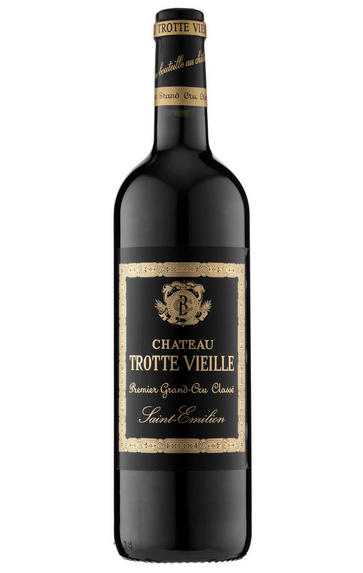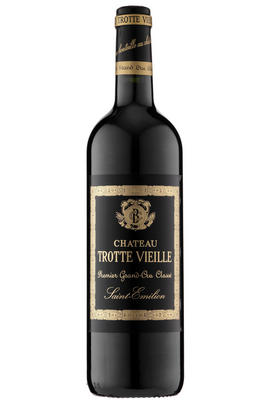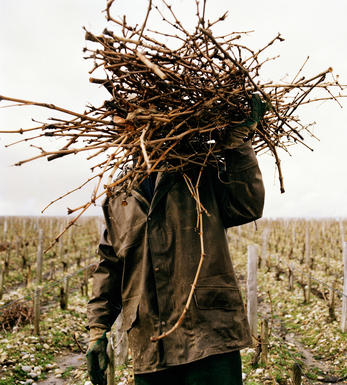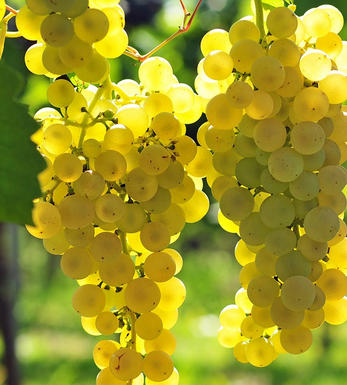
2021 Château Trotte Vieille, St Emilion, Bordeaux

Critics reviews
The 2021 Trotte Vieille is the first vintage vinified in the new facility, using 25 vats for 11.5 hectares that Frederic Castèja told me allowed them more flexibility to pick exactly when they wanted. Matured entirely in new oak plus a couple of amphorae, it has a very detailed bouquet of blackberry, raspberry and a hint of licorice and crushed stone. The palate is medium-bodied with fine tannins, certainly more detailed than previous vintages, and quite saline in the mouth, with a persistent finish. Classic in style, it has the tension to repay long-term cellaring. It may well end up at the top of my banded score.
Drink 2030 - 2060
Neal Martin, vinous.com, (May 2022)
This austere vintage suits the style of Trottevieille, but risks being over-strict, and needs time to put flesh on the bones over ageing. Plenty of floral aromatics right off the bat, following by a mouthwatering combination of pumice-stone salinity, cassis and blackberry fruits, fennel and white pepper spice. Will take its time, but reward patience. 32hl/h yield, 100% new oak. First year in new winery, with double the number of vats (12 up to 25). Axel Marchal consultant.
Drink 2017 - 2042
Jane Anson, janeanson.com (May 2022)
The first vintage made in the estate's new winery, the 2021 Trotte Vieille has turned out beautifully, offering up aromas of sweet berries and cherries mingled with burning embers, rose petals and raw cocoa. Medium to full-bodied, seamless and polished, it's impressively deep and serious. It's a blend of 54% Cabernet Franc, 45% Merlot and 1% Cabernet Sauvignon.
William Kelley, Wine Advocate (Apr 2022)
This is very tangy and bright with real cabernet franc character, showing currant, orange and fresh-herb notes. Medium body with wonderful energy and acidity. Fine tannins. Racy and juicy. 54% cabernet franc, 45% merlot, and 1% cabernet sauvignon.
James Suckling, jamessuckling.com (May 2022)
About this WINE

Chateau Trotte Vieille
A 1er Grand Cru Classé (B) St. Emilion château which has been owned by the négociant house Borie-Manoux since 1949. The company also owns Château Batailley in Pauillac and Château Beau Site in St-Estèphe and is now run by Philippe Castéja. Trotte Vieille (the trotting old lady) refers to the legend of an old woman who lived here in the 18th century and spent her time trotting around in search of local gossip.
The property is located on a plateau east of St-Emilion and the 10-hectare walled vineyard is planted with Merlot (50%), Cabernet Franc (45%) and Cabernet Sauvignon (5%). The grapes are hand-harvested and then fermented in small, temperature-controlled concrete vats. The wine is matured in oak barriques (80% new) for 18 months. It is bottled unfiltered.

St Émilion
St Émilion is one of Bordeaux's largest producing appellations, producing more wine than Listrac, Moulis, St Estèphe, Pauillac, St Julien and Margaux put together. St Emilion has been producing wine for longer than the Médoc but its lack of accessibility to Bordeaux's port and market-restricted exports to mainland Europe meant the region initially did not enjoy the commercial success that funded the great châteaux of the Left Bank.
St Émilion itself is the prettiest of Bordeaux's wine towns, perched on top of the steep limestone slopes upon which many of the region's finest vineyards are situated. However, more than half of the appellation's vineyards lie on the plain between the town and the Dordogne River on sandy, alluvial soils with a sprinkling of gravel.
Further diversity is added by a small, complex gravel bed to the north-east of the region on the border with Pomerol. Atypically for St Émilion, this allows Cabernet Franc and, to a lesser extent, Cabernet Sauvignon to prosper and defines the personality of the great wines such as Ch. Cheval Blanc.
In the early 1990s there was an explosion of experimentation and evolution, leading to the rise of the garagistes, producers of deeply-concentrated wines made in very small quantities and offered at high prices. The appellation is also surrounded by four satellite appellations, Montagne, Lussac, Puisseguin and St. Georges, which enjoy a family similarity but not the complexity of the best wines.
St Émilion was first officially classified in 1954, and is the most meritocratic classification system in Bordeaux, as it is regularly amended. The most recent revision of the classification was in 2012

Chasselas
A white grape variety that is believed to have originated in Egypt. It takes its name from a village in the Saone-et-Loire departement where it is grown to produce Pouilly-sur-Loire. It is widely planted around the world though more often as a table grape than for wine production.
In Germany it is known as Weisser Gutedel, and in France is often known as Chasselas de Moissac. It is the most widely planted variety in Switzerland where it is known as Fendant.
It was first planted in Alsace in the 17th century and is generally blended with other grapes and sold as Edelzwicker. The authorities are not keen on the grape and have banned any new plantings. It is a relatively easy variety to cultivate although its naturally high vigour means it is not suited to very dry and very fertile soils.


Buying options
Add to wishlist
Description
Cabernet Franc 54%, Merlot 45%, Cabernet Sauvignon 1%
Trotte Vieille has some astonishingly old Cabernet Franc vines, some 120 years old. These are now fermented separately in a rotatable 15-hectolitre oak globe, itself an amazing work of cooperage. From this, 100 litres are taken for a varietal vieilles vignes bottling and the rest is in this blend. Frédéric Castéja has also built a new winery close to Troplong Mondot to house this gem. This 2021 is powerfully dense and fragrant, but also leavened by the freshness of the vintage. Drink 2027-2042.
Our score: 16/20
Berry Bros. & Rudd, April 2022
wine at a glance
Delivery and quality guarantee